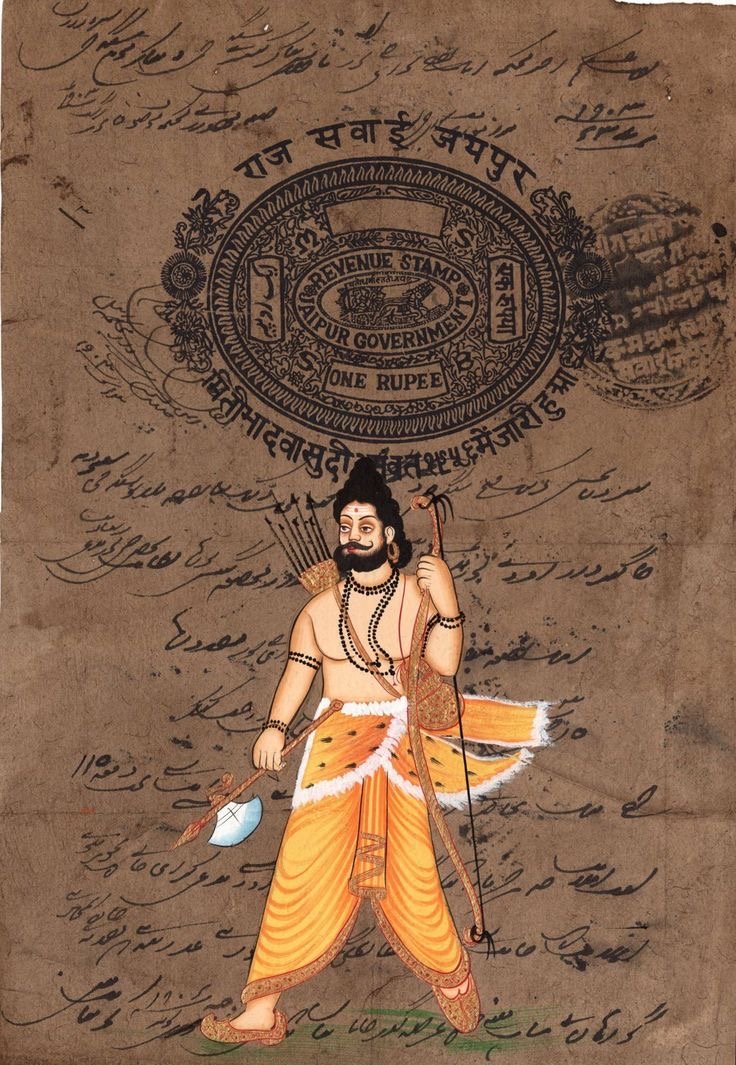GAṄGĀ SAPTAMĪ
Artwork: Pinterest
Sunday, May 4th
This sacred observance falls on the Saptamī tithi (seventh lunar day) of the waxing phase of the Moon in the Vedic month of Vaiśākha (April/May), and commemorates the auspicious reappearance of Gaṅgā Devī upon Earth.
Through King Bhagīratha’s penance, Gaṅgā descended from Svarga-loka, crossing realms to reach Earth, where her sacred waters released the sons of Sagara from their karmic imprisonment.
While Akṣaya Tṛtīyā celebrates the boon of her descent, it is on Gaṅgā Saptamī that her celestial stream was finally released from the matted locks (jaṭā) of Lord Śiva and began to sanctify the Earth.
Artwork: Pinterest
The Purāṇas, including the Rāmāyaṇa (Bālakāṇḍa) and the Bhāgavata Purāṇa (Skandha 9), recount the tale of King Bhagīratha, whose generations-long tapasya invoked Gaṅgā’s compassion to liberate the souls of the sons of Sagara.
Yet her descent was so powerful that it threatened to shatter the Earth—only Śiva, in his vast stillness, could receive her. Holding her within his jaṭā, he did not restrain her, but contained her—transforming overwhelming force into sacred flow.
Artowrk: Pinterest
Here lies a deep teaching: Gaṅgā is awakened śakti—pure descent, untamed grace. Śiva, as the unmoving ground, is the stabilizing force of consciousness that alone can channel her power without collapse. This is the union of śakti and śiva, the dance of movement and stillness, of becoming and being. Her release from Śiva’s locks symbolizes not chaos, but the sanctified expression of grace once held in silence.
Gaṅgā is also the river of Time—kalā herself, flowing endlessly through the three worlds. To bathe in her is to step beyond the bounds of karma, if only for a moment. Śiva, as Mahākāla, the Great Time, stands not within the current of time but beyond it, as the witness of all cycles. In her descent, Time meets the Timeless; and through her, we glimpse the possibility of release from the wheel.
Artwork: Pinterst
In yogic traditions, Gaṅgā is traditionally associated with the Iḍā nāḍī—the left-sided lunar channel, governed by the Moon’s cooling, inward-drawing current of śakti. Alongside Yamunā (Piṅgalā) and Sarasvatī (Suṣumṇā), she forms the subtle triveṇī saṅgam within the energetic body—the sacred inner confluence of breath, mind, and consciousness at the heart of spiritual awakening.
In tantric linages, Gaṅgā is also envisioned as the luminous current of consciousness descending from sahasrāra (the crown) through the Suṣumṇā nāḍī (central channel)—a divine fall not unlike her celestial plunge. Her flow through the inner spine mirrors her outer journey: a river of remembrance, rethreading the soul toward its Source.
Artwork: Pinterest
On this day, devotees honor her presence through mantras, ritual bathing, and silent invocation. Even remembrance is an offering. For those far from her physical waters, to close the eyes and chant her name is to be washed in her subtle presence. May we allow ourselves to be received as she was received—held, softened, and sanctified by the stillness within.
All my Relations - Tulsi
Oṁ Gaṅgāyai Namaḥ
Jaya Jāhnavī Mā











